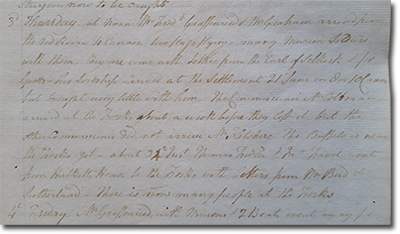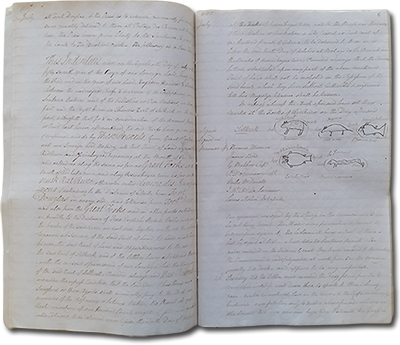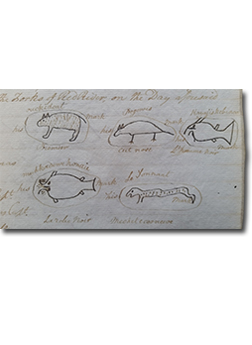Spotlight: HBCA in words and images
Peter Fidler and the Selkirk Treaty: The following is a true copy
Early Hudson’s Bay Company (HBC) employees meticulously recorded significant events and other less notable ones in post journals. They documented everything from the date and the weather, to arrivals and departures. HBC surveyor and post master Peter Fidler wrote about many notable events in the Brandon House journal of 1817-1818. These included the signing of the Selkirk Treaty and the events that led to Fidler being present to witness the signing.
The year 1816 had been an eventful one for Fidler and the HBC, with the sacking of Brandon house in June and other tumultuous events that culminated in the Battle of Seven Oaks. To read more about these events, see Seven Oaks and HBCA Records, 1816-2016.
By early 1817, Thomas Douglas, the Earl of Selkirk, had begun to re-establish the Red River Settlement. To strengthen the colony’s chances of survival, Selkirk sought to negotiate with the surrounding Indigenous nations for access to land in exchange for annual gifts. News of these efforts reached the exiled Red River settlers living at HBC’s Jack River post. On July 3, 1817, they began a journey south to Fort Douglas, assisted by Fidler.

While heading south in a heavy storm, one of Fidler’s canoes that was weighed down with supplies crashed against a rock, spilling its contents into the rough waters. The only supplies salvaged were his desk and papers and one blanket. Recovering from the loss, Fidler and his company paddled on, reaching the mouth of the Red River on July 12 and arriving at Fort Douglas the next day.

Curiously, there are no journal entries for the three days before the Selkirk Treaty was signed, and Fidler’s activities during this time are unknown. However, the silence ended on July 18. Fidler provided a verbatim transcription of the Treaty, including the totems of the signing chiefs.
To see how Peter Fidler’s transcription compares to the official version of the Selkirk Treaty, see The Selkirk Treaty and Map.
See past features in the Spotlight Archive.




